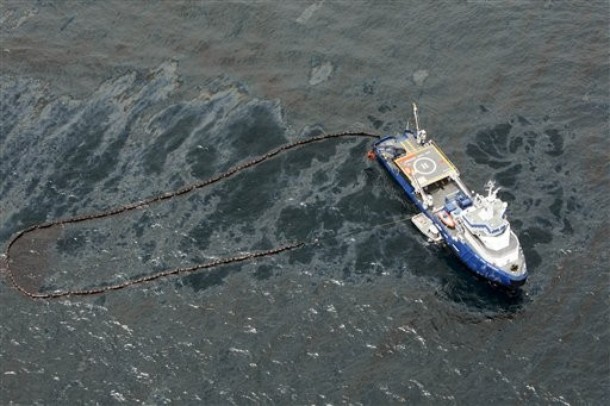
It wasn’t supposed to happen. Oil rigs have devices known as blowout preventers that are supposed to stop the oil flows when incidents like the explosion occur. No less disconcerting, it is still not clear why the device did not activate to prevent what appears to be a growing environmental disaster.
The Deepwater Horizon accident occurred only weeks after President Obama lifted a ban on offshore drilling as part of a larger, multifaceted energy policy aimed at reducing dependency on oil imports. Now those plans have been put on hold indefinitely. Late night comedian David Letterman recently captured the mood of the moment quipping “By the way, Sarah Palin if you’re watching, how’s that offshore drilling working out for ya?”
The Gulf oil rig explosion casts a cloud of doubt over the future of what has been one of the most promising new sources of much needed oil. Technological advances combined with oil prices in the $80 range have made a host of large deep sea oil and gas finds offshore in the US, in Brazil, and off the coast of West Africa among the most encouraging new sources of supply.
Cloud Over Future Drilling
Oil firms can now go 10,000 feet or more below the seas to find oil with new horizontal drilling techniques and more precise seismic imaging. But among the questions raised by the accident in the Gulf is whether the risks or uncertainties of drilling 1, 2 or 3 miles beneath the seas may be greater than have been previously considered.
Whether the explosion was a freak accident or a potentially recurring problem remains to be seen. Regardless, it was the public response to a blowout and oil leak at offshore oil rig near Santa Barbara, California in 1969 that limited offshore drilling in US waters over the past four decades and gave impetus to a then-nascent US environmental movement.
While working on offshore rigs remains a hazardous occupation, oil spills since then have been extremely rare. However, in 2009 an offshore rig in the sea of Timor off Western Australia had a similar accident and spill.
Another promising energy source, shale gas, which already accounts for nearly 40% of US gas production, is also under scrutiny for its environmental impact. While the gas trapped in shale rock is on land, it is also several thousands of feet down. The boom in shale as production since 2007 has also been facilitated by similar technological breakthroughs, particularly horizontal drilling, lowering costs and increasing the ability to drill with precision several thousand feet into the earth.
Heightened environmental concerns over the Gulf oil leak may well spill over into the public debate surrounding shale gas. Local officials in New York and Pennslyvania and Texas are grappling with the issue and there is legislation in Congress aimed at creating federal rules and transparency requirements to regulate shale gas production.
What Energy Future?
The longer-term impact on both U.S. and global energy situations of the Gulf oil spill remains uncertain. Despite a boom in clean energy technologies, the United States remains dependent on 19 million barrels of oil every day, some 12 million barrels of it from imports. While efforts to commercialize new technology able to move into a post-petroleum world continue to ramp up, the harsh reality is that fossil fuels will remain critical, certainly to 2030. The International Energy Agency (IEA) forecasts that by 2020 the world will need to go from current production of some 86 million b/pd to 95 million and roughly 105 million by 2030. Current production depletes every year, and few expect to discover new Saudi Arabias. How to get there?
Many analysts view the spate of recent deepwater offshore discoveries as an important piece of the energy puzzle. But the oceans are a vital part of the global commons. In coming months the risks and benefits of deepsea drilling will undoubtedly be reassessed. And perhaps one consequence may be that investment and innovation in potential alternatives to oil-based transport like third generation non-food based biofuels and electric vehicles may gain more momentum.
Most energy sources involve some degree of risk and trade-offs in costs and benefits. The stalled efforts to open a repository for spent nuclear fuel at Yucca Mountain in Nevada is an example of politics so far deeming the risks unacceptable. In coming weeks and months, a detailed explanation of why the blowout preventer failed and what can be done to prevent such failures in the future may be forthcoming. Such facts will be critical to rendering an intelligent assessment of what are acceptable risks. Absent something closer to failsafe safeguards, in the aftermath of the Gulf accident, the future expansion of offshore oil drilling may be problematic.
Robert Manning is a senior advisor to the Atlantic Council. The views expressed here are solely his own, not those of any U.S. government agency. Photo credit: AP.
Image: deepwater-horizon-cleanup.jpg
